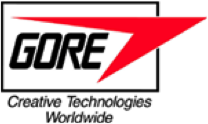Citing its commitment to Life Cycle Assessment (LCA) studies, W.L. Gore & Associates’ Fabrics Division will expand its use of textile solution dyeing and increase its offering of recycled face-fabric textiles in its GORE-TEX portfolio for Fall/Winter 2017. Together the projects will substantially reduce water use and CO2 emissions, says Gore, and also decrease the amount of waste that otherwise might end up in landfills.
Solution dyeing is a yarn-dyeing technology that – compared to conventional dyeing processes – saves up to 60% in water usage, and offers a significant reduction in CO2 emissions (polyester up to 58% reduced CO2 eq. emissions, polyamide up to 45% reduced CO2 eq. emissions), says the company. During the solution-dyeing process, dyestuffs are mixed with the nylon or polyester pellets prior to spinning into yarn. The resulting yarn is permanently, deeply colored and ready to be woven into fabrics.
Thomas Kiebler, who oversees textile development for consumer garments in Gore Fabrics’ Division, said: “This technology not only helps us to reduce our environmental footprint, it also offers a performance benefit of superior color-fastness to light. With this improved color-fastness, consumers will enjoy the brilliance of colors for a longer time. And, as we know from our LCA studies, using a durable outerwear product for a long time is the best thing you can do if you wish to reduce its impact on the environment.”
In 2016, Gore and Berghaus used solution-dyed textiles for Berghaus’ GORE-TEX collection. With the ambition to roll out that technology more broadly, Gore is currently involved in discussions with several other customers, among them Arc’teryx, that will offer a specially developed solution-dyed product in Fall/Winter 2018, designed for Mountain Professionals who are exposed on a regular basis to sunlight in high alpine environments.
In addition to increasing its use of solution dyeing, Gore will increase its offering of recycled face-fabric textiles in its product portfolio. Though the use of mechanically or chemically recycled fabric has a relatively small positive impact on CO2 emissions, using recycled materials enables the Gore Fabrics Division to contribute to reducing the amount of plastic waste that ends up in landfills or in incineration. Gore’s recycled nylon is currently sourced from pre-consumer waste while its recycled polyester source is post consumer PET bottles.
“We are committed to increasing the use of recycled materials in our Gore laminate collection”, Kiebler said. “When customers need our help to assist in achieving their sustainability textiles goals, we will be able to deliver the appropriate product.”
For Fall/Winter 2017, Gore will launch a range of laminates paired with recycled nylons and polyesters in different GORE-TEX product classes, working with brand partners that include Haglöfs, Norrøna and Patagonia.
Gore Fabrics says its announcement around solution dyeing and offering more recycled fabrics follows its announcement in February 2017 of a series of ambitious environmental goals, including its intent to eliminate PFCs of Environmental Concern (www.gore-tex.com/pfcgoal) for the future and to increase the share of garment and footwear laminates that are certified according to the OEKO-TEX Standard 100 and are bluesign approved from its consumer fabrics products in coming years.








